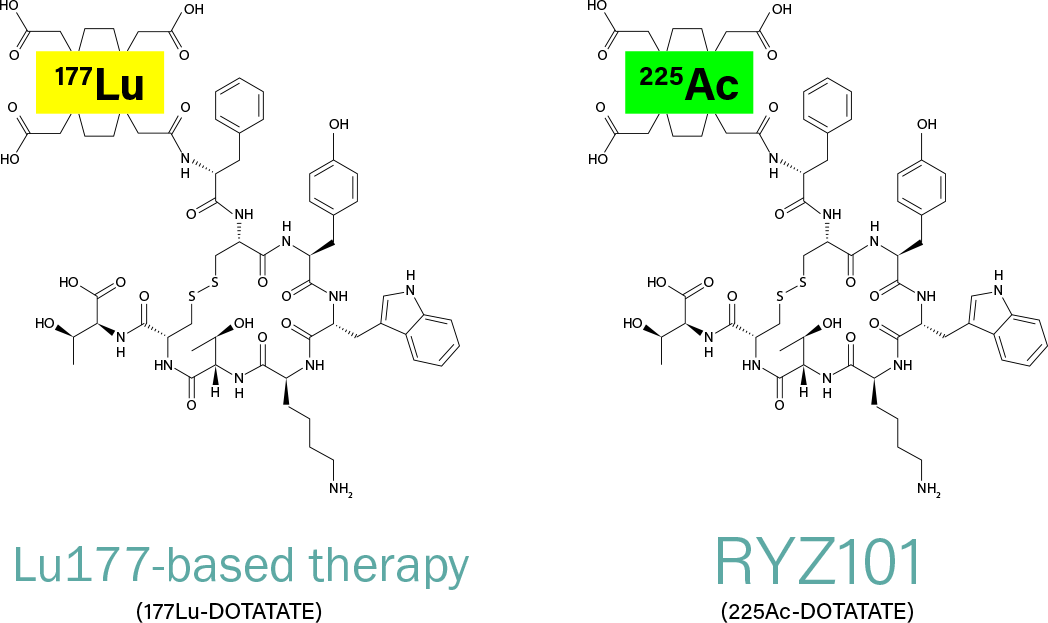RYZ101 for gastroenteropancreatic neuroendocrine tumors, or GEP-NETS
Gastroenteropancreatic neuroendocrine tumors, or GEP-NETs, are rare tumors with an incidence of approximately 18,000 patients annually in the United States.
As many GEP-NETs follow an indolent disease course, the prevalence of GEP-NETs in the United States is approximately 200,000 patients. Somatostatin receptor type 2 (SSTR2) is expressed in 80-90% of GEP-NET tumors. Tumors can be aggressive and resistant to therapy, with metastatic disease present at diagnosis in 40-76% of cases. Radiopharmaceutical Therapy (RPT) comprising DOTATATE, a peptide somatostatin analog with DOTA chelator bound to Lutetium-177 (Lu177), a beta-emitting radioisotope, has shown significant clinical benefit and is approved for treatment of adult patients with SSTR+ GEP-NETs in Europe and the United States. While most patients experience initial disease control in clinical treatment with Lu177-based therapies, patients will invariably progress following treatment and most continue to live for at least two years without any approved treatments.
RYZ101 is our investigational, targeted RPT comprised of DOTATATE bound to Actinium-225 (Ac225), a highly potent alpha-emitting radioisotope. As compared to Lu177, Ac225, which emits a high-energy, shorter-range alpha particle results in more double-stranded DNA breaks in cancer cells, leading to cell death. This mechanism is less amenable to repair by the cell, thus reducing the potential for resistance. RYZ101 has been well tolerated in a Phase 1b trial that enrolled a total of 17 patients, all of which had been previously treated with Lu177 and then had disease progression. No dose limiting toxicity, or DLTs, were observed during the required 8-week DLT period in the first treatment cycle. Treatment has been well tolerated with no treatment related serious adverse events or dose discontinuations due to any adverse event.
RYZ101 for Extensive Stage Small Cell Lung Cancer (ES-SCLC)
Lung cancer is the second most common cancer in the United States with an estimated 238,440 new diagnoses per year, of which small cell lung cancer (SCLC) represents approximately 14%.
Approximately two-thirds of patients with SCLC have metastatic disease at the time of diagnosis and approximately half of patients with SCLC overexpress SSTR2. We are evaluating RYZ101 in a Phase 1b clinical trial for extensive stage—SCLC in the first line treatment setting, in which RYZ101 is being combined with current standard of care therapy.
Details of the study can be found on https://clinicaltrials.gov/ct2/show/NCT05595460
RYZ101 for HR+/HER2- Breast Cancer
Over 2 million new cases of breast cancer are diagnosed each year, and an estimated 13.1 percent of women in the United States will be diagnosed with breast cancer in their lifetime.1, 2
Estrogen receptor positive (or ER positive) HER2 negative diagnoses account for 70% of all new breast cancer patients. Approximately 25,000 ER positive HER2 negative patients express SSTR.3
We are evaluating RYZ101 in a Phase 1/2 study in patients with histologically proven, ER positive, HER2 negative, unresectable or metastatic breast cancer expressing somatostatin receptors (SSTR), that has progressed after at least 2 lines of prior chemotherapy or antibody-drug conjugates.
Patients with hormone-refractory, HR+ advanced breast cancer have very few options after multiple lines of treatment. There are also few agents in development for this population. RYZ101 may provide a promising new option of treatment for this population with high unmet medical need.
Details of the study can be found on https://clinicaltrials.gov/study/NCT06590857
RYZ401, A Next Generation SSTR2 RPT
RYZ401 is being developed as a next generation SSTR2 RPT. It has the potential to offer enhanced tumor retention and decreased kidney uptake for patients with tumors where SSTR2 is overexpressed. RYZ401 may improve patient outcomes and may reduce patient and provider burden and side effects due to improved biodistribution. In addition, it offers potential patient benefits including the elimination of the need for co-administration of amino acids.
Details of the study can be found on https://clinicaltrials.gov/study/NCT07165132


